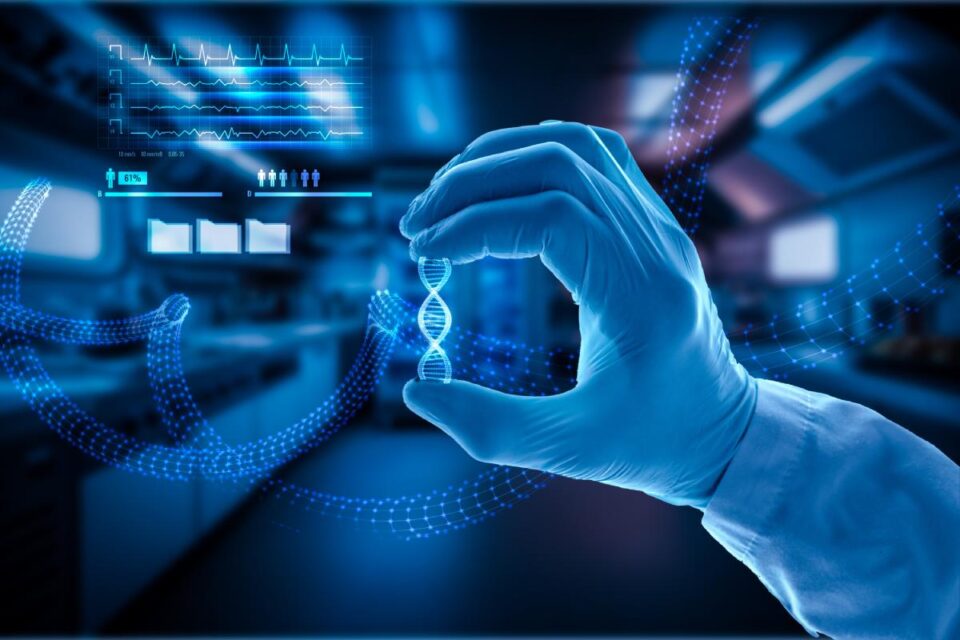Modern artificial intelligence as we understand it today can easily date back to the 1950s, when English mathematician Alan Turing developed the Turing Test with the goal of discovering if machines can show human intelligence. But it was computer and cognitive scientist John McCarthy who first used the term “artificial intelligence,” in 1956.
Lee Lusted and Robert Ledley pinpointed that electronic computers could have a vital role in medical diagnoses, and it’s their 1959 paper “Reasoning Foundations of Medical Diagnosis” that led to many people in the medical sector adopting computer technology. Today, AI’s healthcare role is significant and its assistance is important in a plethora of ways, from diagnosis and treatments to assisting surgeries and other procedures. Here’s a brief timeline and overview of how AI transformed the healthcare industry.
Table of Contents
AI’s Healthcare and Medicine Origins
Lusted and Ledley used math methods like Bayes’ theorem to secure reasoning processes when placing a diagnosis. Stanford University recognized the importance and created the Dendral project in 1965. Joshua Lederberg, who won a Nobel Prize, and AI healthcare pioneer Edward Feigenbaum took control of the project. They managed to identify organic molecules previously unknown by assessing massive spectrometry information.
Around the same time, we saw the emergence of Eliza, one of the first chatbot. Its function was to create a dialogue between a patient and psychotherapists. Although it was quite basic, it marked an early stage of establishing a system based on clear rules regarding healthcare provider-patient communication.
AI Healthcare Systems Emerged in the 1970s
The 1970s was a fruitful time for AI healthcare, although the concept was still nascent. SUMEX-AIM (the Stanford University medical experimental computer for artificial Intelligence in medicine) was created in the ’70s with funding from the National Institutes of Health. The aim was to test and promote AI’s healthcare capabilities
Here are a few more innovations from that productive decade:
— Internist-I: An educational experiment conducted at the University of Pittsburgh, the goal of Internist-I was to be a computer-assisted diagnostic tool connecting the knowledge base, diagnostic hypotheses, and clinical findings.
— PIP: Short for present illness program, the idea was to assess patients who experienced edema during early diagnostics. Its four major components were patient data, a long-term memory (data repository), a short-term memory (data repository plus patient data) and a program to act on patient input.
— Mycin: Developed at Stanford University, it was created to diagnose infection and recommend patient-specific antibiotics. It was also used to diagnose blood-clotting diseases.
— CASNET: The causal associational network, or CASNET, was designed at Rutgers Research Resource.
Continuous AI Healthcare Development — the ’80s
The impressive success of AI-related projects in the 1970s inspired researchers worldwide to continue working on different applications of this technology in the healthcare industry.
The 1986 release of DXplain was an important event. It is a system developed by the Laboratory of Computer Science at the Massachusetts General Hospital to generate diagnoses for hundreds of different diseases. Over time, DXplain got better and is now capable of diagnosing over 2,600 medical conditions.
CorSage is a tool that uses AI’s capabilities and statistical pattern recognition to help cardiologists determine which patients after a coronary event are most likely to suffer another one. The system originated in 1989 in Cedars-Sinai Medical Center in Los Angeles.
AI-powered systems can also be of use in pathology. (PEIRS), a pathology expert interpretative reporting system, helps medical experts by generating pathology reports.
AI’s Advanced Application in Healthcare from the 2000s
Artificial intelligence made a giant leap forward in the 21st century. Here’s a timeline of important events from the 2000s:
— 2003: Scientists created the Human Genome Project intending to secure abundant information on the genetic foundations of different diseases.
— 2007: Watson was created by IBM. With AI’s assistance, the system is capable of answering various questions. In 2011, Watson was tested on Jeopardy! and came in first place. The AI’s healthcare applications started later, and it’s interesting to note that neurologists apply it in ALS diagnosis to recognize RNA-binding proteins.
— 2015: Pharmabot is a chatbot that serves as a consultant in pediatric medicine. The idea is for the system to receive information from a conversation and then provide information, suggest, and prescribe general children medications. The chatbot can also automatically renew prescriptions for certain patients.
— 2017: The Food and Drug Administration certified the Arterys medical imaging cloud AI for use in radiology. The idea is to reduce subjectivity and accelerate heart MRI analysis to seconds.
— 2020: Google DeepMind uses the power of artificial intelligence to try to distinguish a protein’s amino acid sequence from its 3D structure with AlphaFold. This is one of the greatest challenges biology has ever faced.
Additionally, Cedars-Sinai Department of Computational Biomedicine founded the Center for Artificial Intelligence Research and Education, and the FDA approved 91 machine learning or AI-enabled tools in 2022 alone.
Artificial intelligence has established a strong presence in healthcare, and it’s here to stay. Ai’s capability of helping in radiology and screenings saves medical experts time and effort while presenting reliable results with a high accuracy level. Disease diagnosis and primary care are also heavily intertwined with AI.
Technology overall plays a significant role in telemedicine. Apart from communicating with patients remotely, healthcare uses smart wearable devices to monitor patient parameters and send alerts if anything unusual occurs.
Artificial intelligence has already proved to be a vital companion in improving healthcare quality and patient outcomes. The idea is by no means to replace human doctors but to combine the power of machine learning and other AI technologies with human knowledge and expertise. AI saves time on repetitive tasks and provides recommendations for diagnosis or treatments, as well as assists during surgeries and other procedures. That places it as a vital asset to healthcare providers and ensures they provide better and more efficient patient care.

